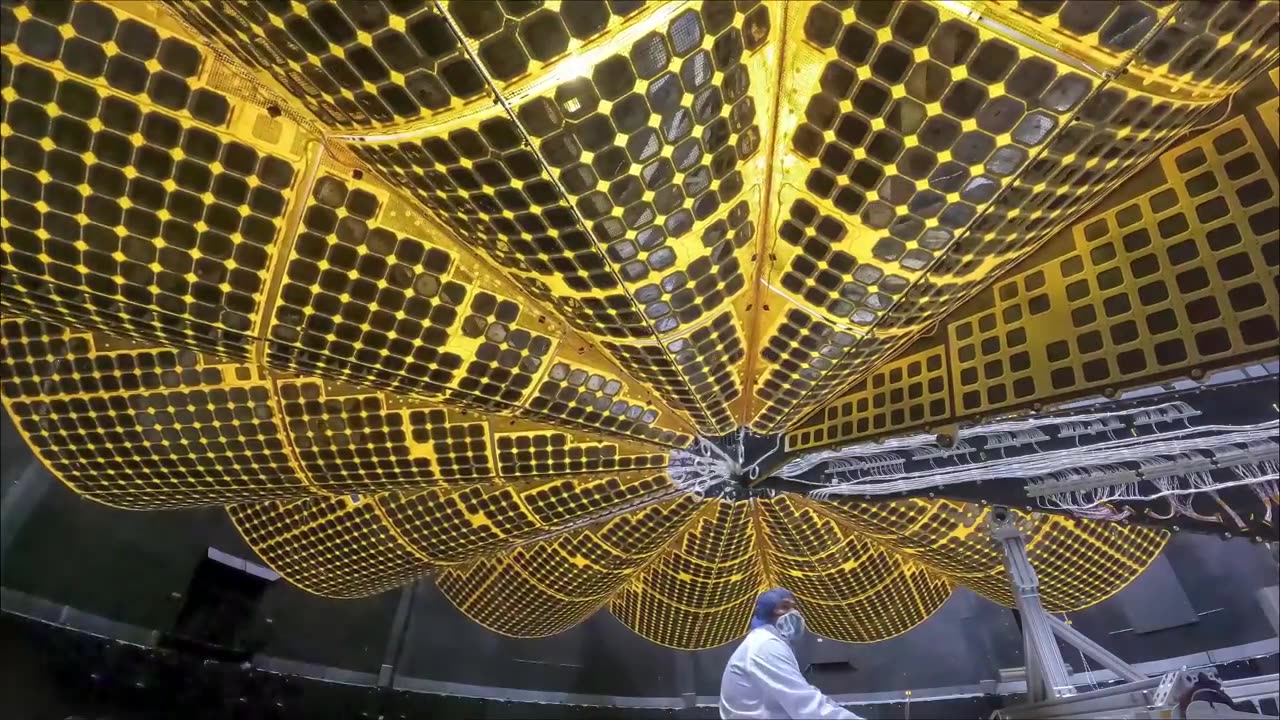Premium Only Content

NASA’s Lucy Mission Extends its Solar Arrays
Yes, you are correct. NASA's Lucy mission successfully extended its solar arrays on October 17, 2021, shortly after its launch from Cape Canaveral Space Force Station in Florida. The two solar arrays are each about 24 feet (7.3 meters) wide and will provide power to the spacecraft as it travels to and studies the Trojan asteroids.
The Trojan asteroids are a group of asteroids that share the orbit of Jupiter around the Sun. They are located in two swarms, one leading Jupiter in its orbit and one trailing it. The Lucy mission will visit seven Trojan asteroids, including five that have never been visited before.
The mission is named after the fossilized human ancestor Lucy, who lived about 3.2 million years ago. The scientists who named the mission hope that it will help them to learn more about the early history of our solar system.
The Lucy mission is scheduled to last for 12 years. It will reach its first target asteroid, the Main Belt asteroid 52246 Donaldjohanson, in April 2025. It will then visit the Trojan asteroids 617 Patroclus and 61620 (1999 TC36), 16 Psyche, 15099 Molorchus, and 11351 Leucus. The mission will conclude with a flyby of the Trojan asteroid 46610 Asteroidea in 2033.
The Lucy mission is a major milestone in the exploration of our solar system. It will provide scientists with valuable insights into the formation and evolution of the solar system.
-
 LIVE
LIVE
Tate Speech by Andrew Tate
1 hour agoEMERGENCY MEETING EPISODE 96 - LAWFARE BREAKDOWN
17,878 watching -
 LIVE
LIVE
The Quartering
1 hour agoFAA Bans Drones, Elon Musk For Speaker Of The House, Fani Willis Humiliated, Disney Drops Woke!
4,994 watching -
 1:24:42
1:24:42
Russell Brand
2 hours agoHow the State Department Shapes Global Narratives
66.9K34 -
 50:18
50:18
Ben Shapiro
1 hour agoEp. 2108 - Musk, Trump Team Up To KILL Pork Bill
10.2K10 -
 LIVE
LIVE
vivafrei
5 hours agoLock Liz Cheney Up! Spending Bill MADNESS! Not Just Pork, but GAIN OF FUNCTION! & MORE! Viva Frei
3,000 watching -
 55:51
55:51
The Dan Bongino Show
5 hours agoWe Are NOT Falling For This Again (Ep. 2391) - 12/19/2024
579K2.39K -
 1:57:58
1:57:58
The Charlie Kirk Show
2 hours agoAmericaFest: Day 1 | Bannon, Maloney, Posobiec, O'Keefe | 12.19.24
41K3 -
 DVR
DVR
TheAlecLaceShow
3 hours agoGuests: AG Andrew Bailey & Dr. Michael Schwartz | DOGE Shuts Down Speaker’s CR | The Alec Lace Show
6.93K -
 LIVE
LIVE
hambinooo
1 hour agoPUBG DOMINATION
68 watching -
 1:03:06
1:03:06
The Rubin Report
3 hours ago‘Piers Morgan’ Goes Off the Rails as 'TYT' Host Attacks Dave with Nasty Insults
47.3K80